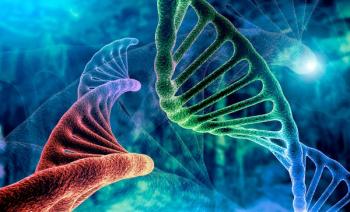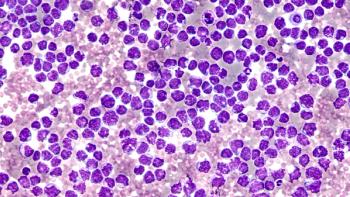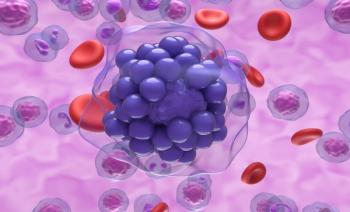
ZRSR2 Loss Alone Does Not Drive JAK2 V617F MPN Progression
Key Takeaways
- ZRSR2 mutations are linked to JAK2 V617R-driven MPNs but are insufficient alone for disease progression.
- CRISPR-Cas9 studies showed ZRSR2 loss causes intron retention and transcriptional changes without accelerating MPN progression.
A new analysis suggests links between ZRSR2 loss and JAK2 V617R disease progression are indirect and complex.
Mutations in ZRSR2 have been linked with disease progression in patients with JAK2 V617R–driven
The authors explained that JAK2 V617R is the most
“[T]he functional consequences of mutations in ZRSR2 in terms of disease progression in JAK2 V617R–driven MPNs have not been determined,” they explained.
The authors used CRISPR-Cas9 gene editing to test out the impacts of ZRSR2 loss in both JAK2-mutated human megakaryoblastic cell lines and in a mouse model of MPN. By doing so, they hoped to better understand how ZRSR2 loss affects patients with MPNs
Previous research has indicated that ZRSR2 is involved in minor spliceosome assembly, and its loss
In the human cells the authors analyzed, the authors confirmed that ZRSR2 loss leads to retention of U12-type introns.1 It also leads to transcriptional changes in genes containing such introns, they said. Yet, those changes were not enough to lead to disease progression, they found.
The murine models showed that Zrsr2 loss led to “modest intron retention and minor transcriptional changes.” Again, though, the authors concluded that such changes were not enough to accelerate progression of MPNs.
The investigators noted that
Patients with certain types of MPNs appear to be more likely than others to have concurrent ZRSR2 mutations and JAK2 V617R–driven disease. Analyzing data from a
“It is noteworthy that these co-occurring mutations were more commonly associated with MF rather than ET or PV, including chromatin modifiers ASXL1 and EZH2, or DNA methylation regulator TET2,” the authors wrote. “Moreover, the frequency of ASXL1, EZH2, and TET2 mutations was significantly higher in cases co-mutated with ZRSR2 compared to those without ZRSR2 mutations.”
Thus, they said, it may be that patients with JAK2 V617R MPNs and ZRSR2 mutations are more likely to have high-risk mutations in chromatin modifiers, which in turn elevate the likelihood of progression from MPN to MF.
The authors validated the earlier findings using a cohort of 18 patients with ZRSR2 mutations, and they plan to carry out functional and mechanistic studies to see whether ZRSR2 mutations predispose patients to genetic instability and how they interact with epigenetic regulators to promote disease progression.
References
1. Zhang R, Straube J, Janardhanan Y, et al. ZRSR2 loss causes aberrant splicing in JAK2V617F-driven myeloproliferative neoplasm but is not sufficient to drive disease progression. Hemasphere. 2025;9(9):e70225. doi:10.1002/hem3.70225
2. Kralovics R, Passamonti F, Buser AS, et al. A gain-of-function mutation of JAK2 in myeloproliferative disorders. N Engl J Med. 2005;352(17):1779-1790. doi:10.1056/NEJMoa051113
3. Madan V, Kanojia D, Li J, et al. Aberrant splicing of U12-type introns is the hallmark of ZRSR2 mutant myelodysplastic syndrome. Nat Commun. 2015;6:6042. doi:10.1038/ncomms7042
4. Madan V, Cao Z, Teoh WW, et al. ZRSR1 co-operates with ZRSR2 in regulating splicing of U12-type introns in murine hematopoietic cells. Haematologica. 2022;107(3):680-689. doi:10.3324/haematol.2020.260562
5. Grinfeld J, Nangalia J, Baxter EJ, et al. Classification and personalized prognosis in myeloproliferative neoplasms. N Engl J Med. 2018;379(15):1416-1430. doi:10.1056/NEJMoa1716614
Newsletter
Stay ahead of policy, cost, and value—subscribe to AJMC for expert insights at the intersection of clinical care and health economics.













































